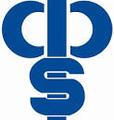WELLBEING AND INCLUSION

Reframing Language to Provide Support
In the last newsletter, we talked about how we can re-frame language to support children who are emotionally dysregulated. It means changing from imperative language to declarative language.
An imperative is a question that demands a response. It might be a verbal response or an action. Imperative responses are either correct or incorrect. You either answer the question right or you don’t, or you perform the stated action correctly or you don’t. It’s black and white. Here are some examples:
Say hello to Grandma
Look at me.
Declarative language is a comment or a statement. Usually it is a statement that observes. For example, it may observe events in the environment, including people, actions and changes.
Here’s how you could turn the above imperatives into a declarative statements.
Say hello to Grandma. Grandma has arrived and greeting her is a nice thing to do. But what if we said, Oh look! Grandma is here! without further instruction. This tips off the child that there has been a change in their environment, while leaving space for them to decide how to respond to this change. Perhaps they will say hello, but they might also run over to give her a hug, they might wave from where they are playing, or they might say, ‘Hey Grandma!’ All are fine acceptable options. The declarative statement has created space for the child to respond to Grandma’s arrival in their own unique way.
Look at me. When we say this, we are demanding attention. Instead, what if we use a statement to give information about the social context and to teach the importance of observation, such as, I’m worried you might miss something important if you don’t look. When a phrase like this is followed by a silent pause, the child will often look on their own and be ready to take in the new information.
Declarative statements can allow a child to open up rather than shutting down. Children can learn and discover what to do, making them feel competent and more open.
Source: Declarative Language Handbook
Virginnia Gilham – Inclusive Practices Leader


